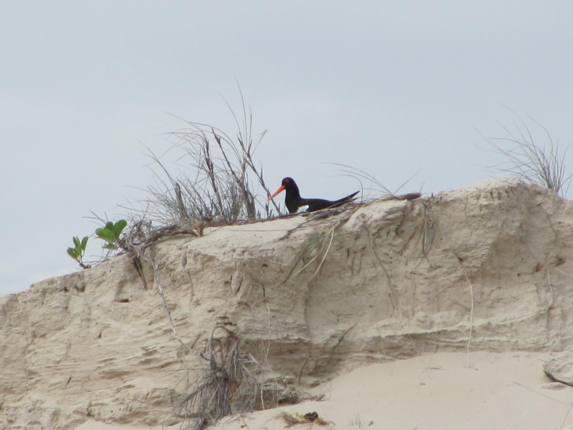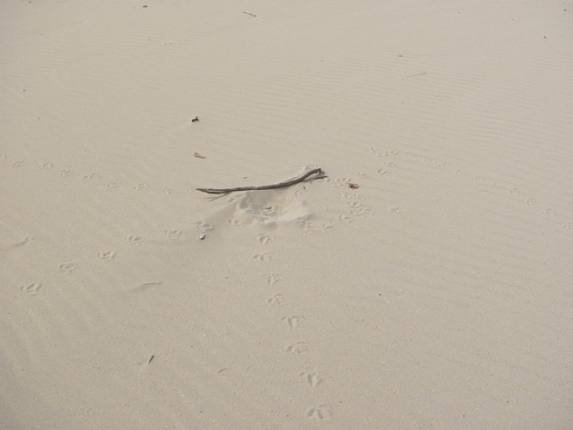During the last week I have been monitoring the 23 kilometre stretch of beach that runs along the west coast of Broome. The tides have been suitable for me to cover most of the beach by bicycle and this enables me to cover most of the area in a day. This is the time of year when the Pied Oystercatchers breed and already three of the sixteen pairs along this stretch of beach have successfully laid eggs. The first pair to lay eggs this season have only a few more days of sitting and then they will be very busy guarding their chicks from predators. The pair that are in the northern most area have put their nest on a rather precarious cliff, but it is well above a big tide. It has had to be relocated from the previous years location due to erosion from cyclones earlier in the year. I made one brief trip to the nest site to get a GPS reading to be reported to Birds Australia Nest Record Scheme and then the parent returned to the nest. They both share the sitting duties throughout incubation, but close to hatching they will both stay very close to the nest site.
Pied Oystercatcher nest with 2 eggs
Pied Oystercatcher returns to the nest
The long sand spit in the most northern section has changed a lot in the last few months and could be at risk of going under water on a large tide. I normally park my bicycle up and walk this section as there are either three or four pairs of Pied Oystercatchers breeding in this territory. I walk along the high tide mark and then follow the footprints up to find their scrapes. There has been a lot of experimenting this week while they decide which is the ideal spot. You will find one scrape and then follow the prints along the spit and there will be several more. Eventually they will decide which is ideal and eggs will be laid. Here are some examples of potential nest sites.
Now I realise you saw the first photo and you saw the reef becoming exposed and firstly you thought about the great food source for the shorebirds. You then wondered what else was out there! Well, it is our favourite reef for exploring and it did deserve another visit this week on the low tide. Over the years we have seen so many sea snakes wash up we have given up counting, but we had the pleasure of finding two very healthy specimens in the rock pools waiting for the tide to come in. This one was the nicer looking specimen, as the other was rather pale.
Stokes’ Sea Snake
Our other big surprise was finding 8 Hawksbill Turtles in the rock pools. They were not adults and were just resting until the tide came back in.
I have posted about the sea snakes and the reef in the past, but there is always more to see and explore!




















Not much preparation I guess; they just kind of sit and lay their eggs.
No, not a lot of prep but I see some egg-shaped imprints in the ‘cup’. I was wondering if they were the same size as the eggs. I’m guessing smaller.
@ Renato and Dianne-although it does not look like a lot of preparation I have seen them spend quite some time on it. Initially one bird makes the cup by moving it’s body through the sand or moving little rocks on a sandstone cliff. Then the other bird will try it and it then either gets adjusted or they walk off and look at another place nearby. I have one male bird that tries hard to please his partner with nest preparation-she stands and watches, comes over and sits, walks back off and he then does more adjusting and she seems to be a very hard bird to please! She is quite a bit bigger than him and he may just not get the size/shape right first time round!
@ Dianne-I think the prints you are seeing are the footprints where they change their mind and walk off. When they are sitting on eggs there are lovely imprints of their tarsus bone alongside each egg.